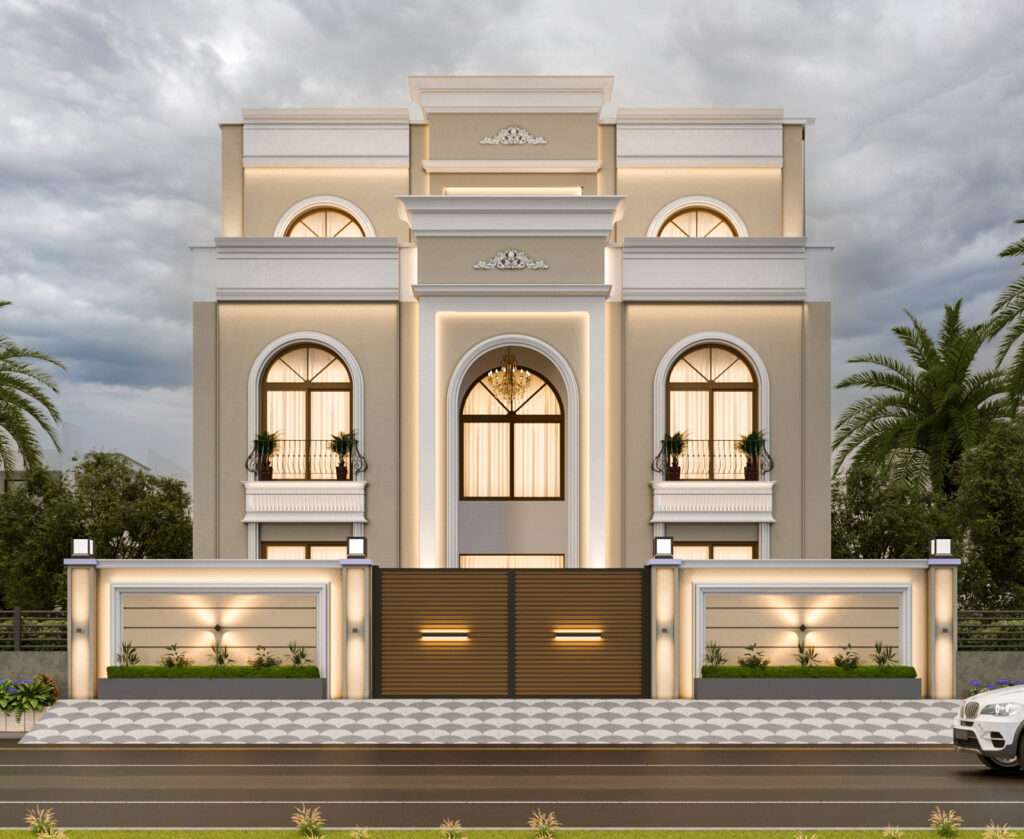
Classical Style



Introduction
Architecture is not just about functionality; it is an art form that reflects the cultural and historical context of a society. One of the most revered and enduring styles of architecture is classical elevation design. Established in old Greek and Roman customs, traditional rise configuration is portrayed by its amicable extents, fancy itemizing, and ageless allure. In this blog, we will dive into the essence of classical elevation style, investigating its key components, standards, and the getting through impact it has on contemporary design.
Historical Background
Classical Elevation tracks down its underlying foundations in old Greece and Rome, where it was created as a reaction to the requirement for great and stunning designs. The ancient Greeks laid out the sets of design, including the Doric, Ionic, and Corinthian orders, which characterized the extents, ornamentation, and construction of traditional structures. The Romans further developed these practices, integrating curves, vaults, and vaults into their engineering collection.
Key Components of Classical Elevation
Classical Elevation encompasses a few key components that add to its particular stylish allure:
Proportion : Old style structures are known for their fastidious thoughtfulness regarding extent. The utilization of numerical proportions, like the brilliant proportion, guarantees that every part of the structure is fitting together amazingly with the entirety.
Balance : Evenness is a key quality of traditional height plan. The façade of a traditional structure is frequently partitioned into equivalent parts, making a feeling of equilibrium and request.
Columns and Pilasters: Old style structures highlight segments or pilasters, which act as upward supports and add visual interest to the height. The decision of segment request, like Doric, Ionic, or Corinthian, further characterizes the structure’s style.
Ornamentation: Old style height configuration is famous for its perplexing ornamentation. This incorporates ornamental components like friezes, pediments, moldings, and moldings, which add extravagance and loftiness to the façade.
Principal of Classical Elevation Designs
Classical elevation design is guided by a set of principles that contribute to its enduring appeal:
Order : The idea of request is essential to old style engineering. The utilization of the old style orders, with their unmistakable extents and ornamentation, makes a feeling of equilibrium, congruity, and solidarity.
Hierarchy :
Traditional rise configuration frequently utilizes a various leveled framework, with components of the façade organized in a progressive request of significance. This helps guide the watcher’s consideration and underlines the structure’s primary highlights.
Repetition : Redundancy of design components, like sections or windows, makes cadence and visual congruity. This redundancy adds to the general intelligibility and tastefulness of the rise.
Classical Details : Tender loving care is a sign of old style rise plan. Each component, from the multifaceted carvings to the exact moldings, is fastidiously created to upgrade the general excellence and visual effect of the structure.
Contemporary Applications and Influences
Classical elevation design continues to influence contemporary architecture in various ways:
Neoclassical Revival : Over the entire course of time, there have been times of neoclassical recovery, where draftsmen drew motivation from old style height plan to make new structures. This restoration is obvious in tourist spots like the White House in the US or the English Exhibition hall in London.
Classical elements in modern design : Old style rise plan components, like segments, curves, and pediments, are frequently integrated into current engineering to add a hint of class and immortality. This combination of traditional and contemporary styles makes outwardly convincing designs.
Sustainable Design : Traditional height plan’s accentuation on extent, amicability, and immortal excellence adjusts well to the standards of manageable plan. By utilizing persevering through compositional components, reasonable structures can be intended to endure over the extreme long haul both stylishly and practically.
Conclusion :
Classical elevation design addresses an immortal way to deal with structural excellence. Its rich verifiable roots, regard for extent and detail, and getting through impact make it an esteemed style in the realm of design. Whether in the glory of old sanctuaries or the tastefulness of present day structures, old style rise configuration proceeds to enamor and motivate. Its inheritance lives on, helping us to remember the force of plan to rise above time and have an enduring effect.